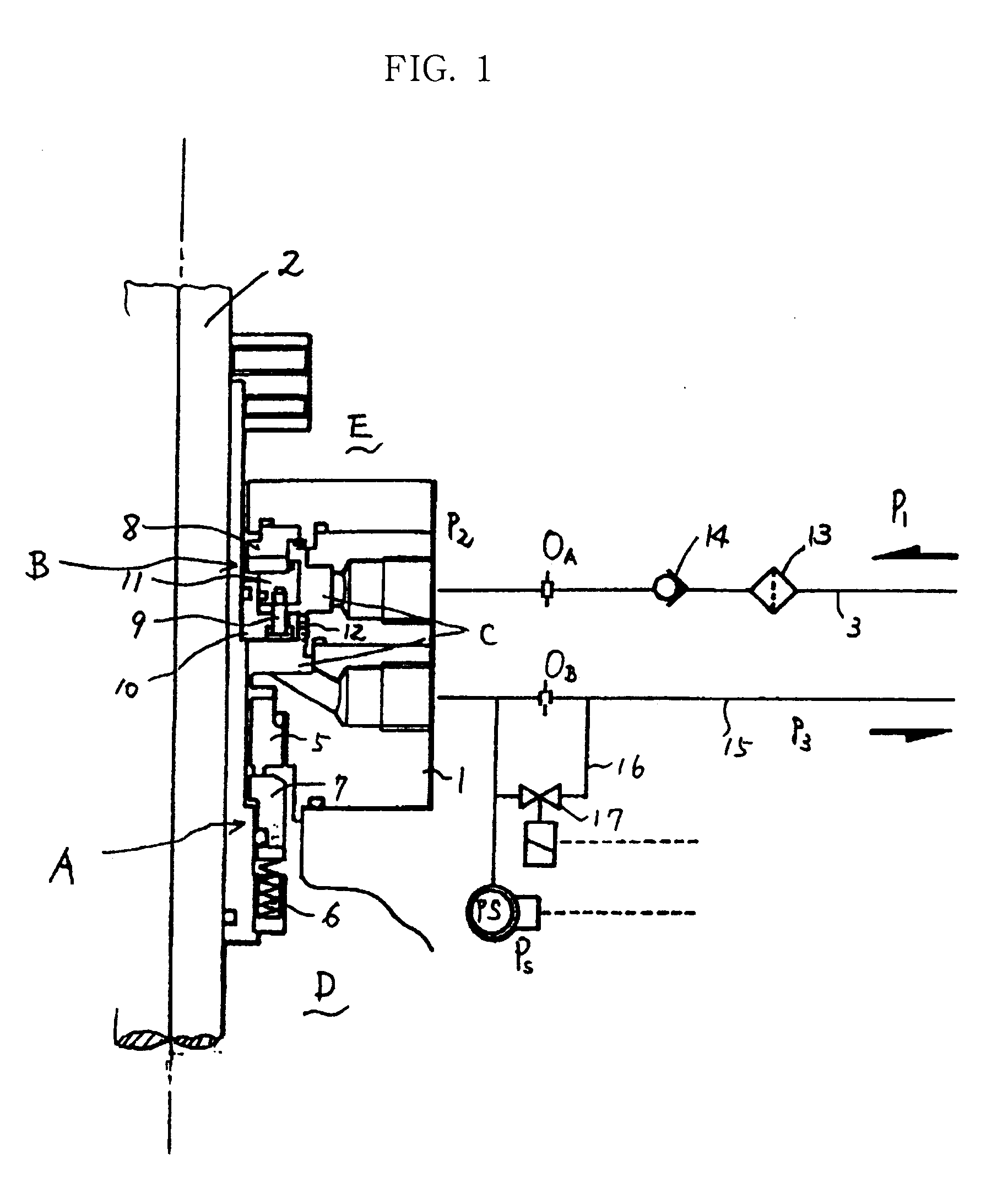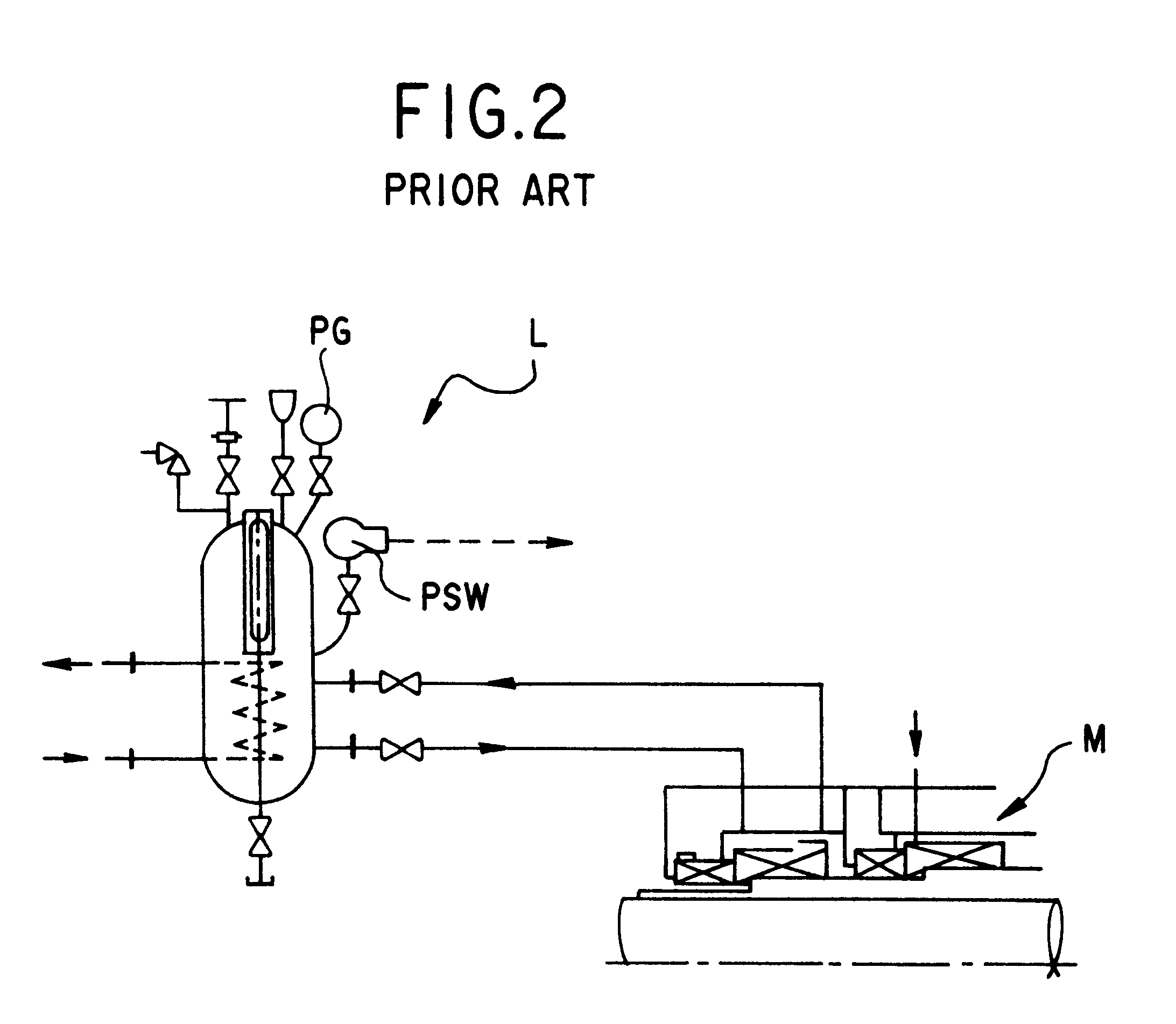Shaft sealing apparatus
a sealing apparatus and shaft technology, applied in the direction of engine fuction, engine seals, machines/engines, etc., can solve the problems of large-scale apparatus, increased manufacturing costs, and drastic changes in the pressure of purge gas as a sealing fluid for dry gas seals (i, non-contact mechanical seals)
- Summary
- Abstract
- Description
- Claims
- Application Information
AI Technical Summary
Benefits of technology
Problems solved by technology
Method used
Image
Examples
Embodiment Construction
The preferred embodiment of the present invention will now be described with reference to the accompanying drawings.
FIG. 1 is a system diagram of a shaft sealing apparatus according to one embodiment of the present invention wherein reference numeral 1 designates a seal casing and reference numeral 2 designates a rotary shaft passing through the seal casing 1. Further, as shown in FIG. 1 , a contact type mechanical seal A and a dry gas seal (i.e., non-contact type mechanical seal) B are mounted on the rotary shaft 2 in line with each other with the mechanical seal A located on the side of a target sealing fluid area D and the dry gas seal B located on the side of an atmospheric area E.
The mechanical seal A fixedly holds a stationary sealing ring 5 on the seal casing 1 and at the same time, allows a rotary sealing ring 7 to be biased by sping bias force 6 toward the stationary sealing ring 5 to be slidably held on the rotary shaft 2 in the axial direction.
Further, the dry gas seal B ...
PUM
 Login to View More
Login to View More Abstract
Description
Claims
Application Information
 Login to View More
Login to View More - R&D
- Intellectual Property
- Life Sciences
- Materials
- Tech Scout
- Unparalleled Data Quality
- Higher Quality Content
- 60% Fewer Hallucinations
Browse by: Latest US Patents, China's latest patents, Technical Efficacy Thesaurus, Application Domain, Technology Topic, Popular Technical Reports.
© 2025 PatSnap. All rights reserved.Legal|Privacy policy|Modern Slavery Act Transparency Statement|Sitemap|About US| Contact US: help@patsnap.com



